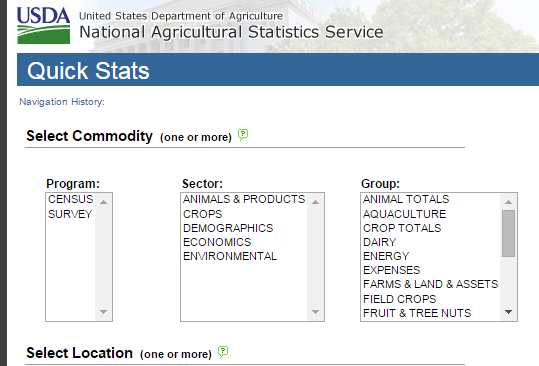
There are several government departments and agencies that collect data to support your research assignments and projects. Explore the following databases to locate statistics and data on your topic(s).
If you have questions about finding information on these websites or if you need more information on your chosen topic please contact the library staff for assistance.

The Food and Agriculture Organization of the United Nations Statistics Division (FAOStat) provides free and easy access to data for 245 countries and 35 regional areas from 1961 through the most recent year available. You can browse or download statistical data by country or region, subject, item and year.
The Food and Agriculture Organization of the United Nations also maintains tools to provide up-to-date information on prices of agricultural commodities, including wheat and corn. Commodities continue to be added and the current database includes weekly data, monthly and annual averages.
Search FAO: Price Data and Tools
To search for a particular data report, you should select the commodity, desired report type, and year of interest. Some commodities that were recently added may only have current data available.

The USDA Economics, Statistics and Market Information System (ESMIS) managed by Cornell University's Mann Library contains more than 2700 reports and datasets produced by the USDA. Example: The Annual Crop Progress Report provides acreage, yield and production data at the crop level.
